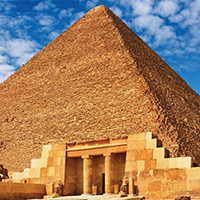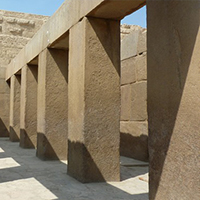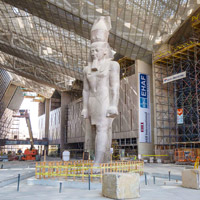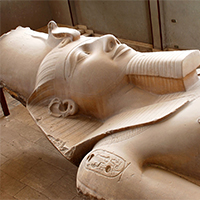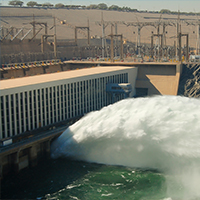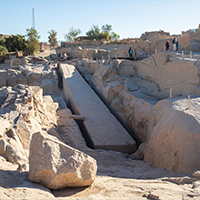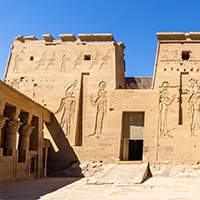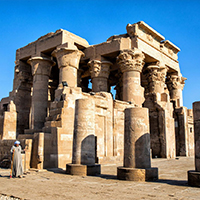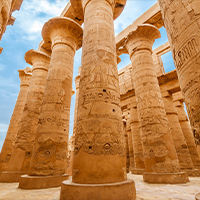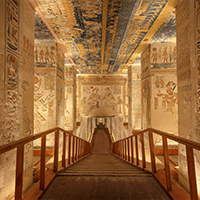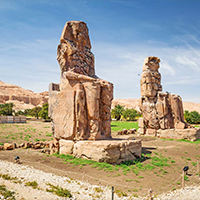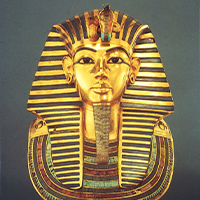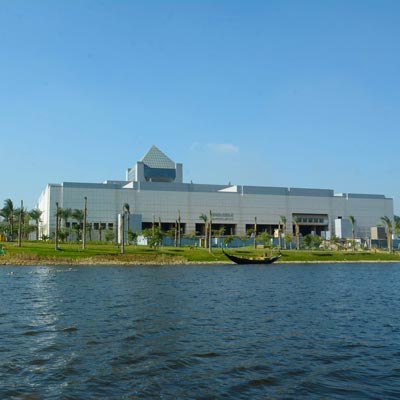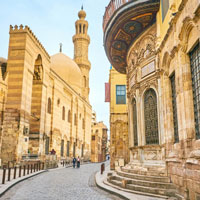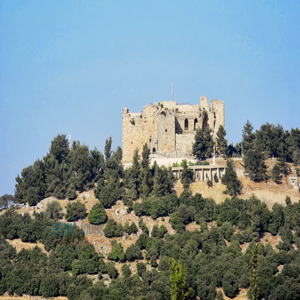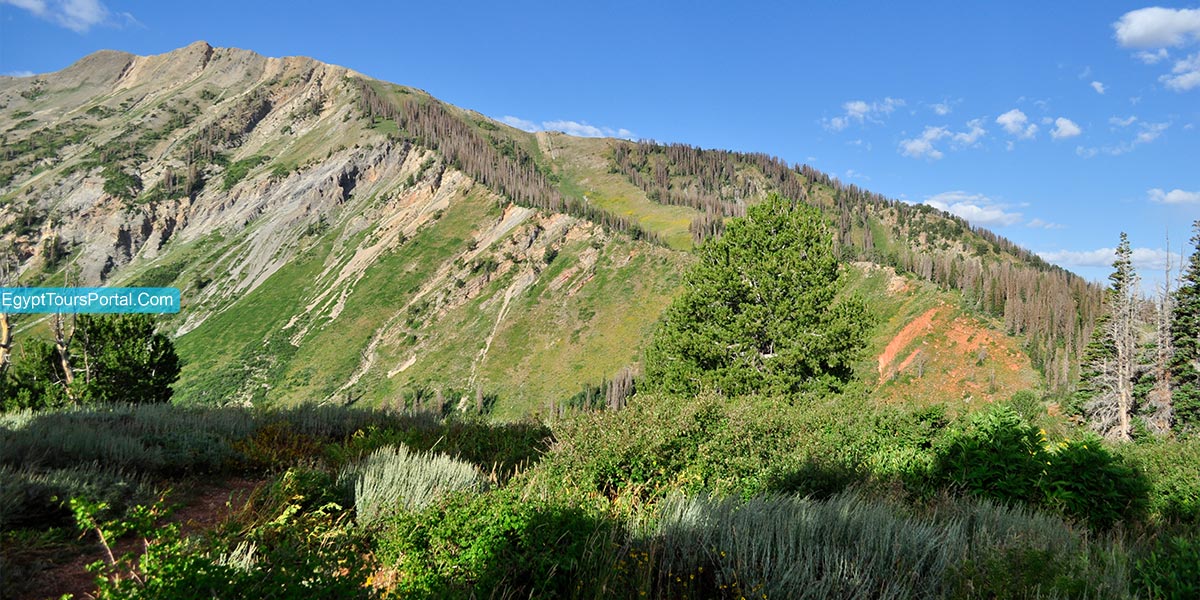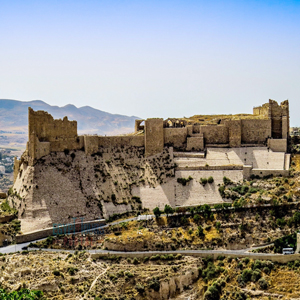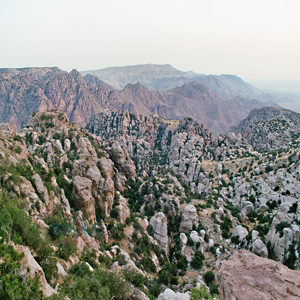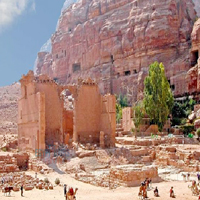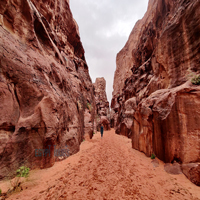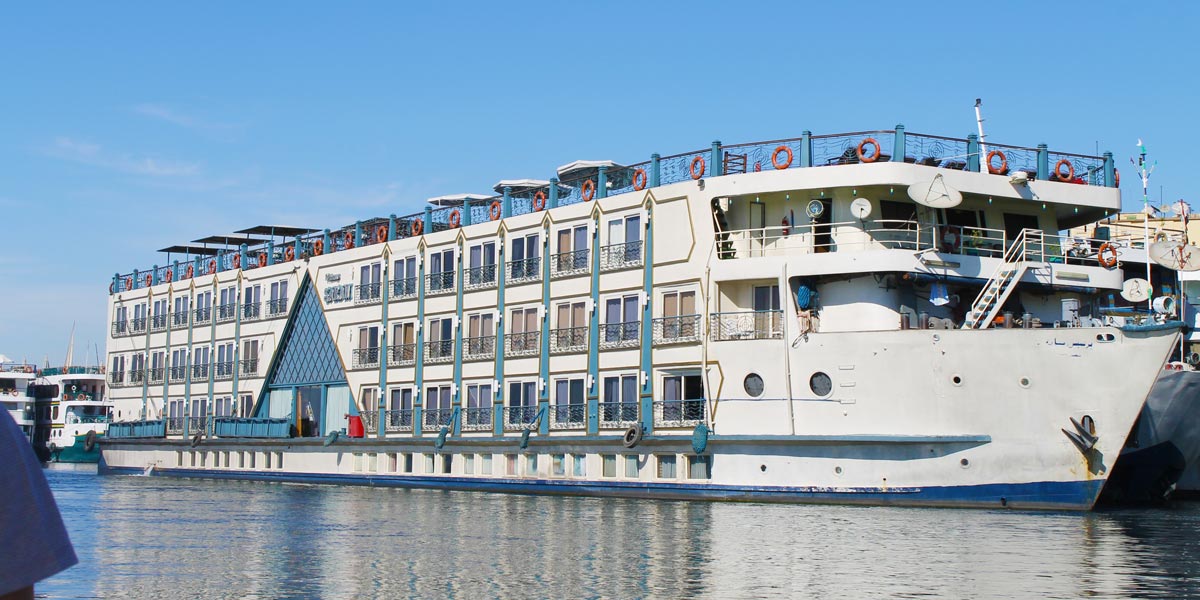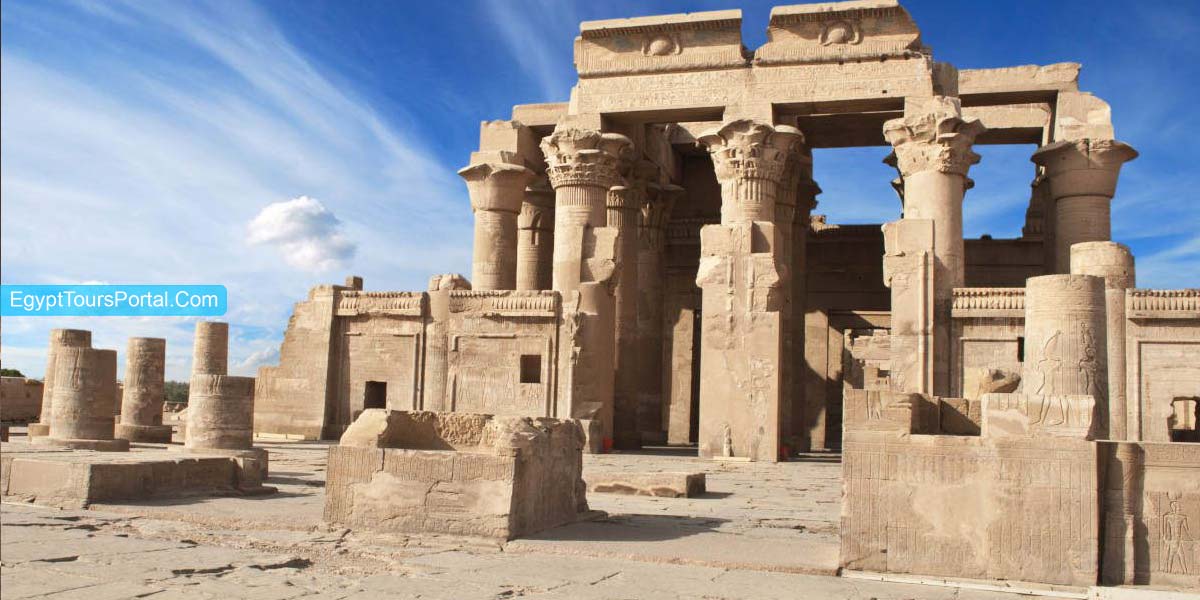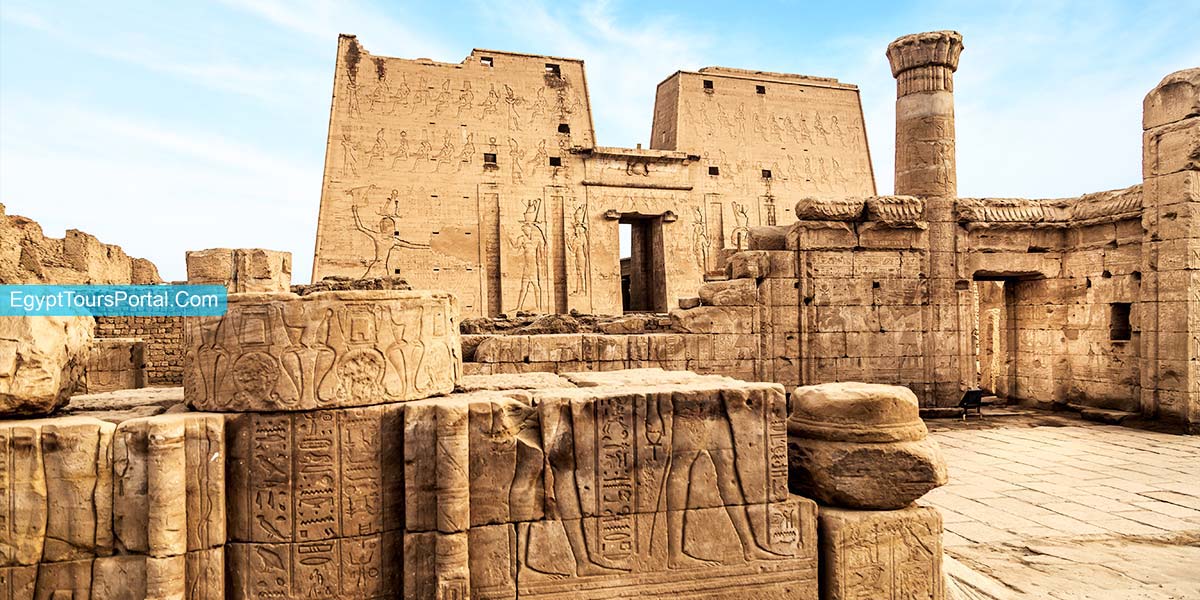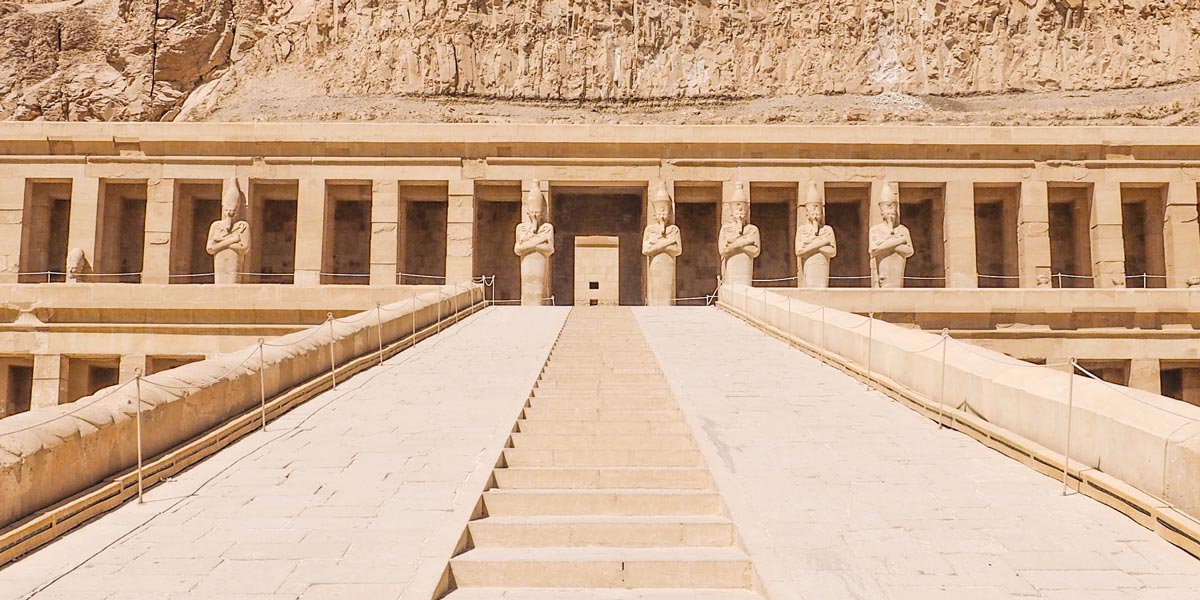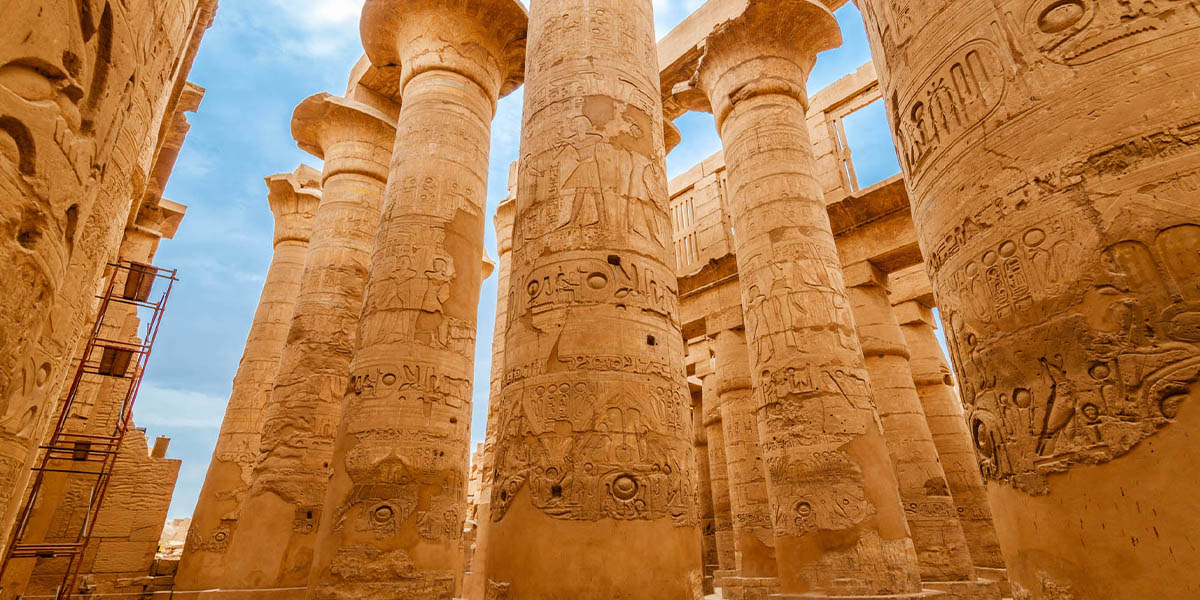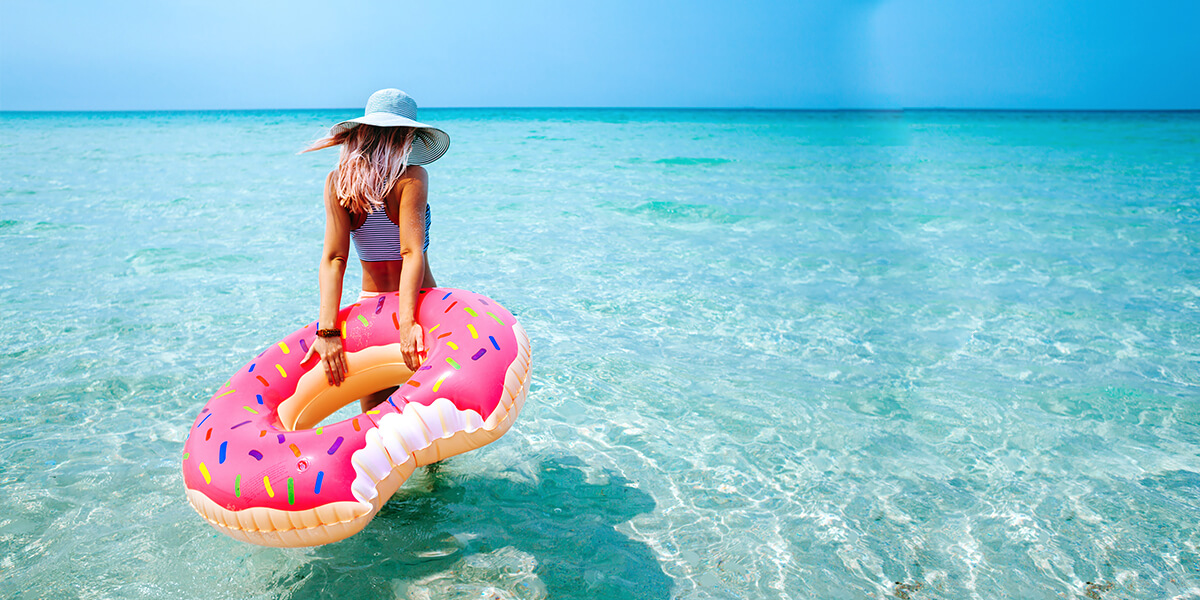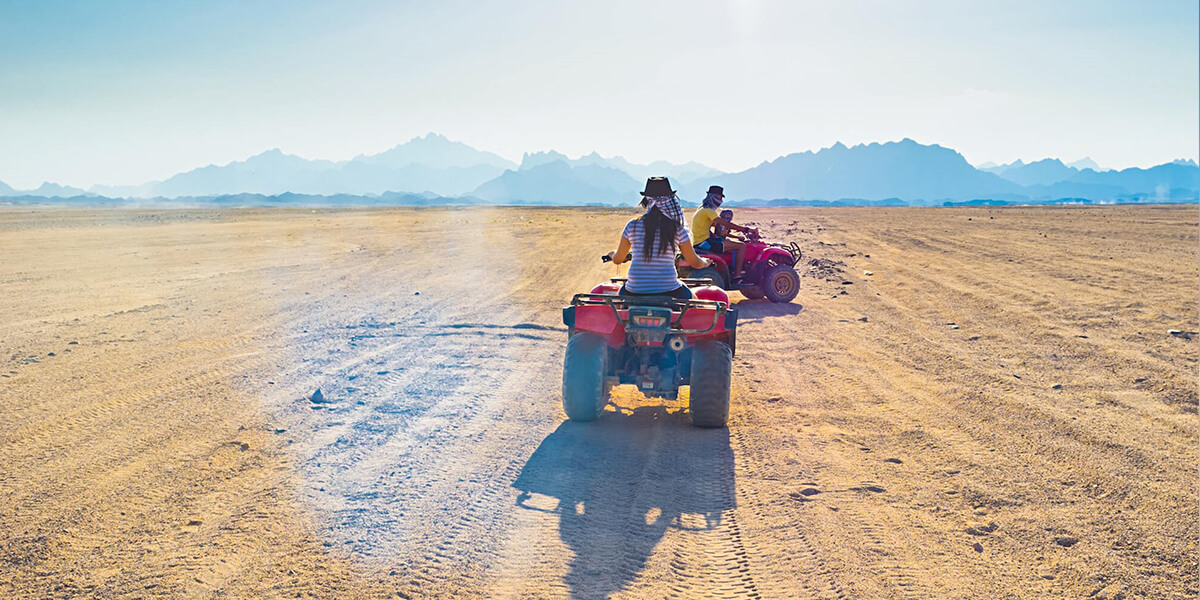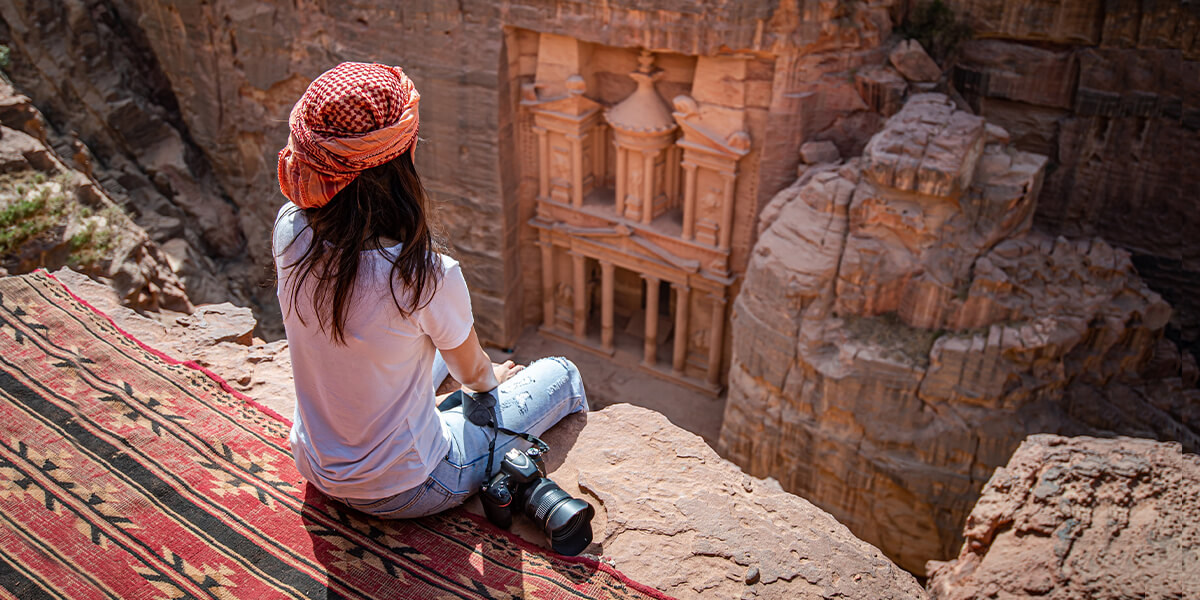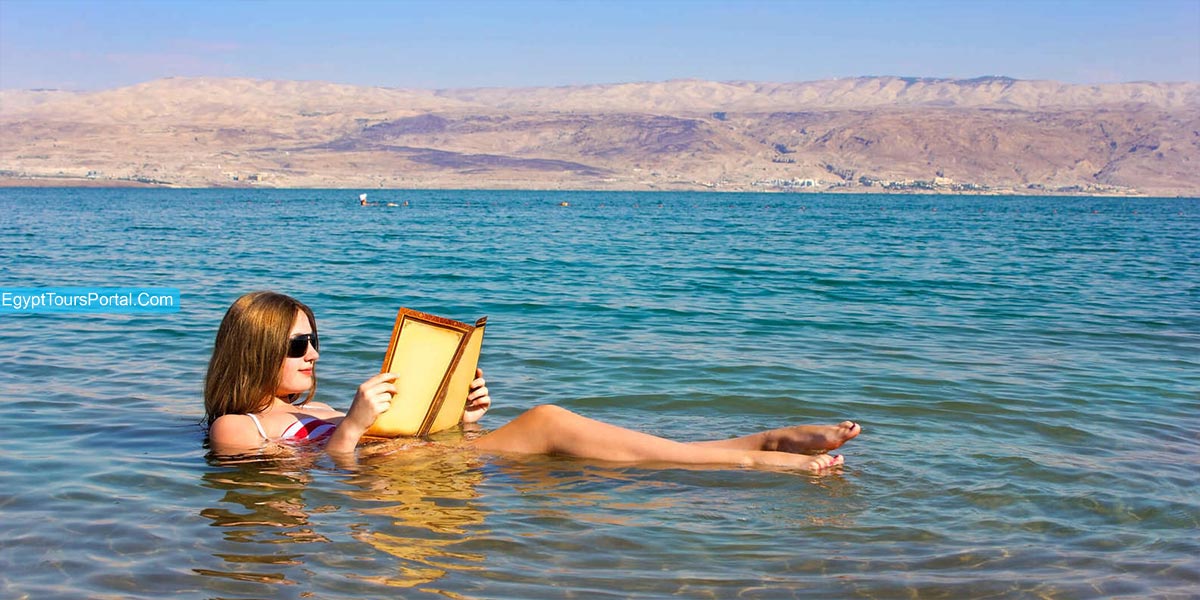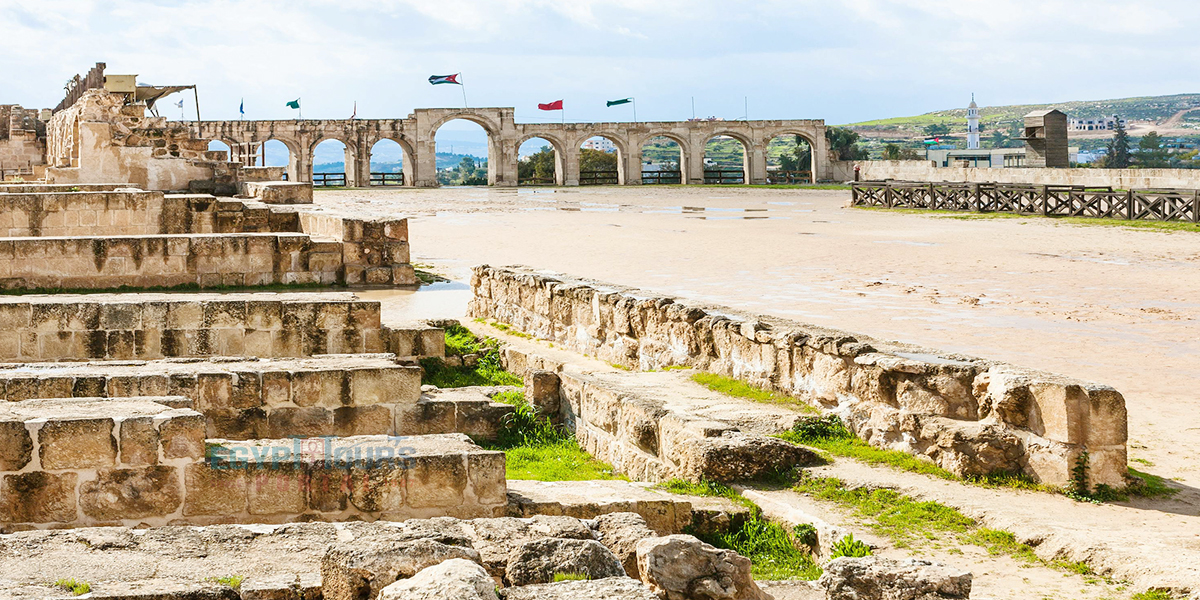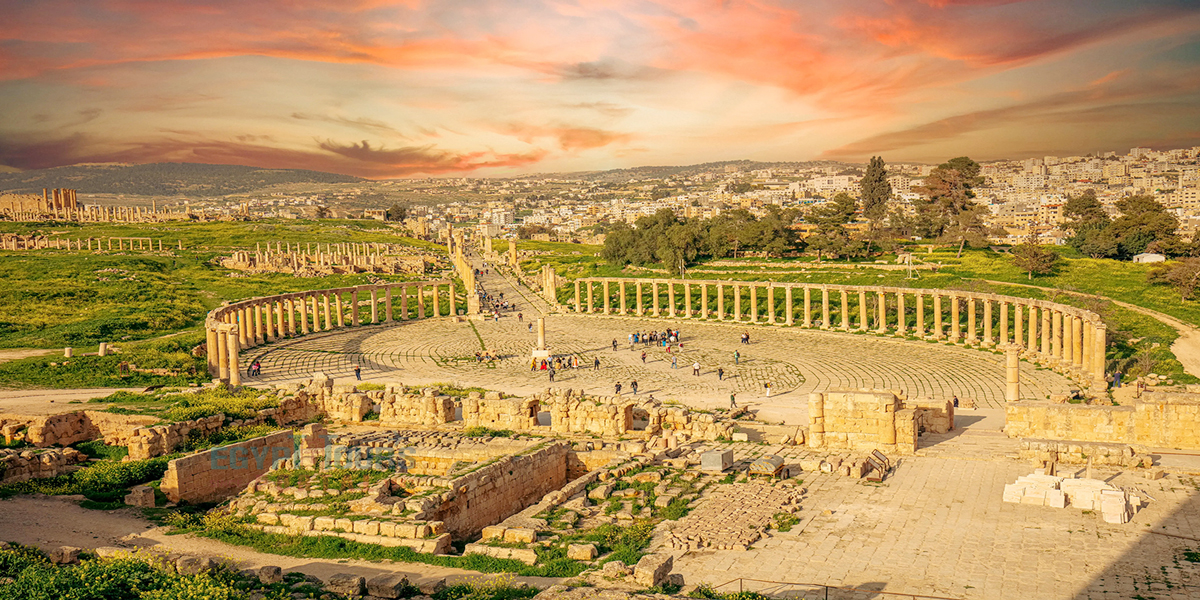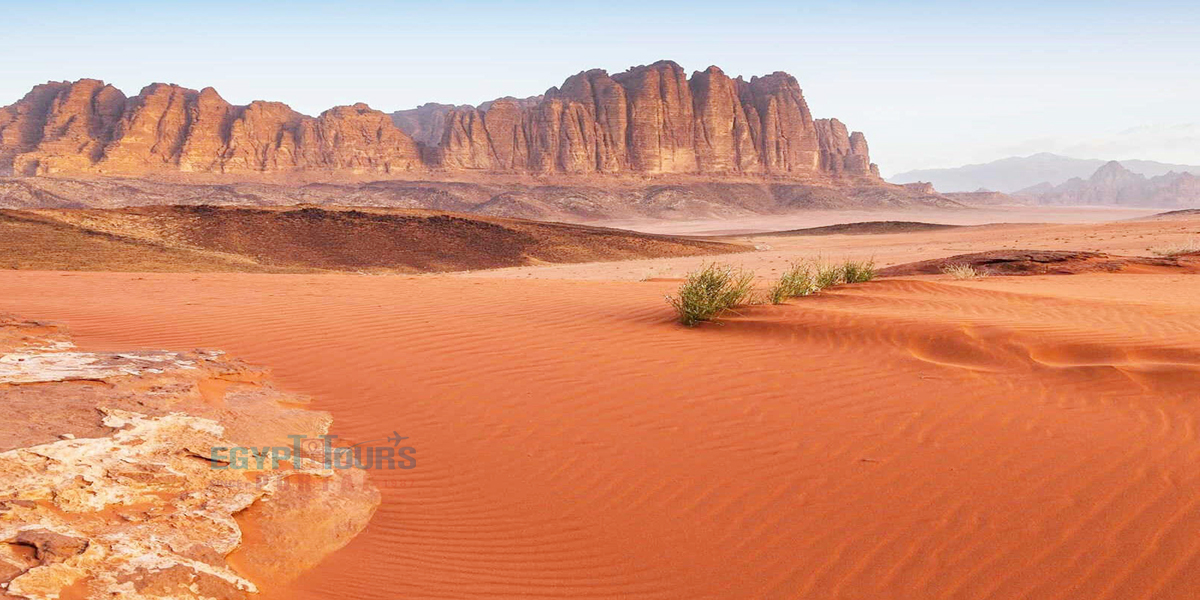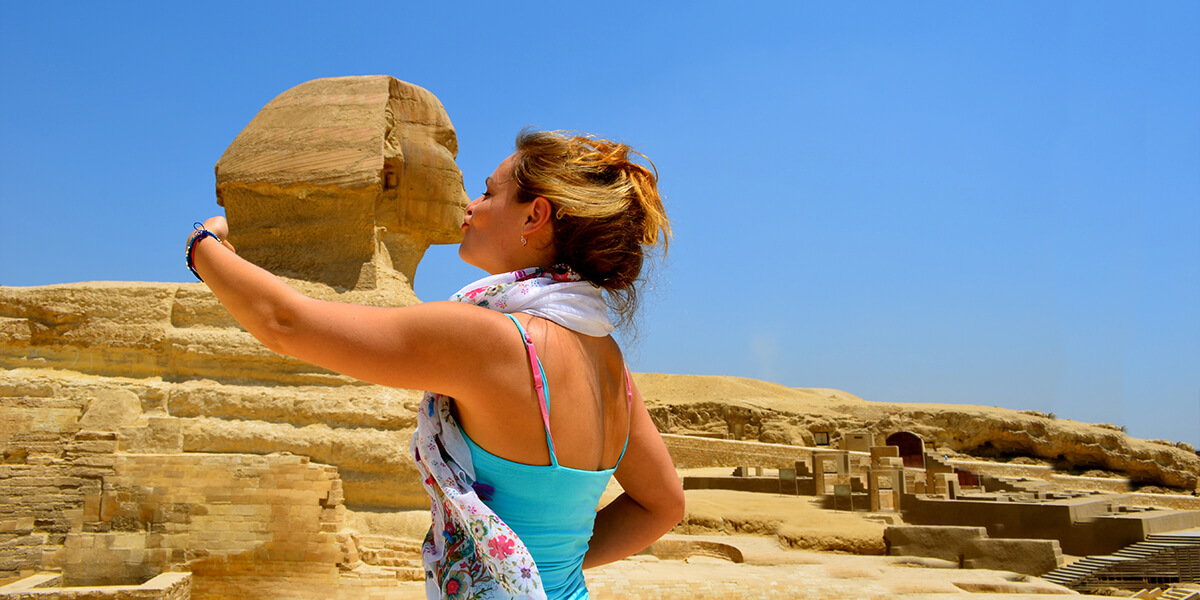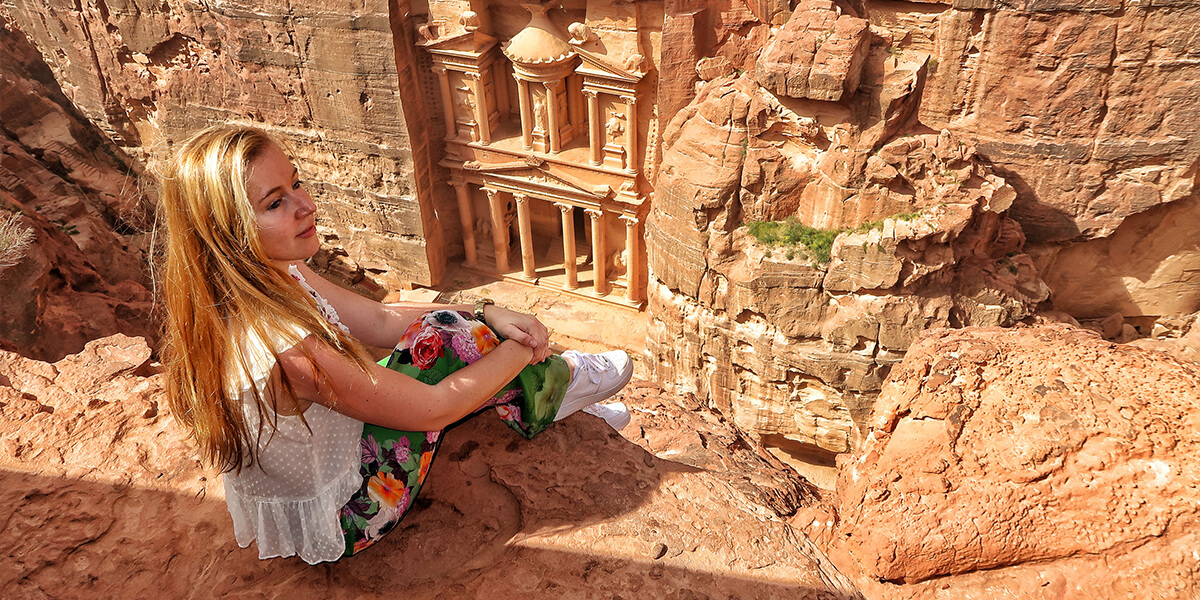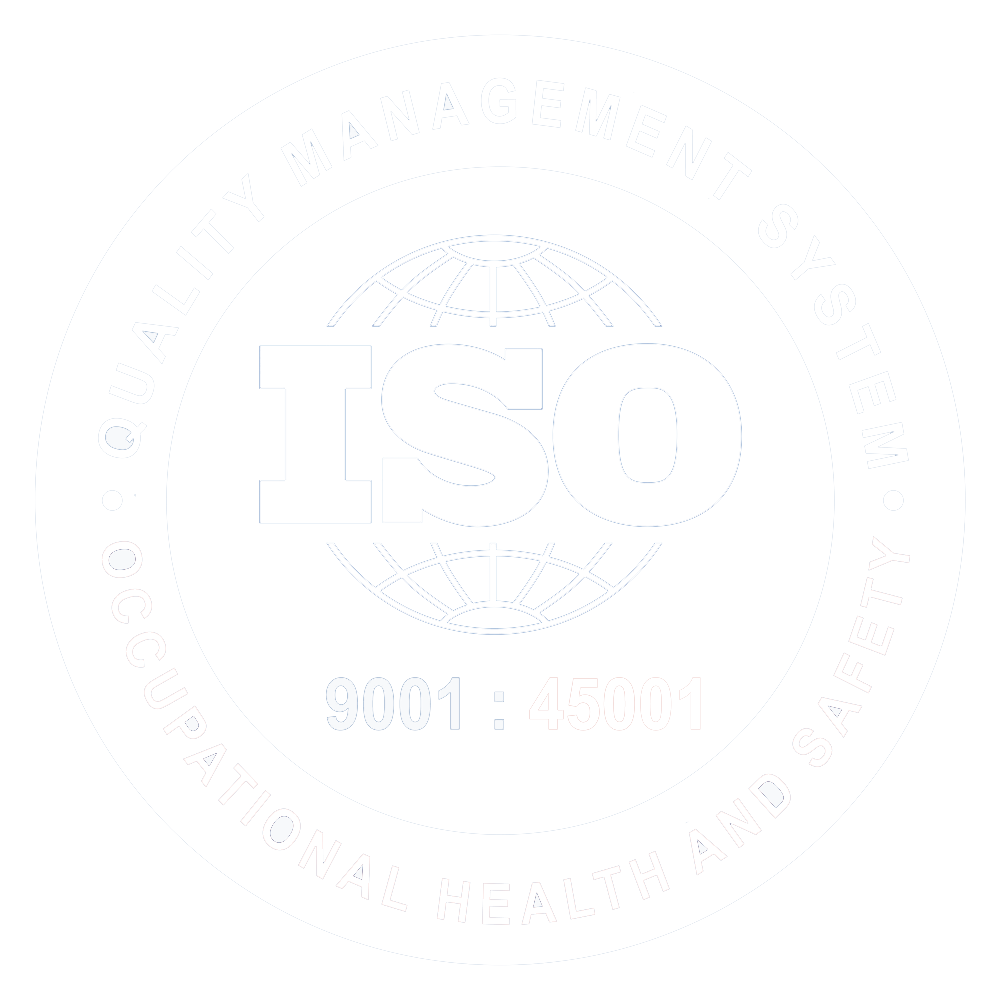17 Days Cairo, Hurghada, Nile Cruise, and Jordan tour
Tour Details
| Duration | 17 Days/ 16 Nights |
| Tour Location | Cairo / Giza / Aswan / Kom Ombo / Edfu / Hurghada / Luxor / Petra / Jerash / Dead Sea / Madaba / Wadi Rum |
| Tour Availability | Everyday |
| Pickup & Drop Off | Cairo Airport |
| Tour Type | Classic Tour |
Enjoy a magnificent 17 Days Cairo, Hurghada, Nile Cruise, and Jordan tour
17 Days Cairo, Hurghada, Nile Cruise, and Jordan tour will showcase the immortal heritage of the region's enchanting wonders. Our Irish travelers will enjoy refined hotels and cruise cabins, reliable transportation, scheduled flights, memorable dining, and expert Egyptologist-led guiding. The amazing international trip bears the hallmark of Egypt’s premier travel agency, decorated internationally by many travel awards and honoured by TripAdvisor year after year.
Our Irish travelers on this golden 17 days Egypt and Jordan tour will shed light on the epic legacy of Cairo, Luxor, Aswan, Hurghada, Madaba, Petra, Jerash, and Wadi Rum. Our Irish guests will explore the magnificant marvels of the divine countries of Egypt and Jordan which hold the Giza Pyramids Complex, Saqqara Step Pyramid, grand Egyptian museum, Muizz Street, the Cairo Citadel, Khan El Khalili Bazaar, Kom Ombo Temple, Edfu Temple, Philae Temple, Abu Simbel temple, Karnak Temple Complex, Hatshepsut temple, Valley of the Kings, Madaba’s mosaic map, Mount Nebo’s, the Siq to Al-Khazneh, Hippodrome of Jerash, Temple of Artmis, the Royal Tombs of Petra, Ajloun Castle, Roman Theatre, Qasr al-Bint, Karak Castle, Dana Biosphere Reserve, Wadi Rum amid red dunes, the rock art at the Nabataean Temple, Lawrence Spring, and Khazali Canyon. Our Irish travelers will live a magical travel experience across the beautiful Red Sea & the medicinal waters of the Dead Sea. Book this thrilling 17 days tour between Egypt & Jordan and live a majestic trip filled with the sight of greatness and grace.
Tour Highlights
Giza Attractions
- Giza Pyramids
- The Sphinx
- Saqqara Step Pyramid
- The Valley Temple
- The Grand Egyptian Museum
Cairo Attractions
- The Egyptian Museum
- Hanging Church
- Al Muizz Street
- Khan El Khalili Bazaar
- National Museum
Aswan Attractions
- Philae Temple
- Aswan High Dam
- Edfu Temple
- The Unfinished Obelisk
- Kom Ombo Temple
Luxor Attractions
- Karnak Temples Complex
- Colossi of Memnon
- Valley of the Kings
- Hatshepsut Temple
Amman Attractions
- Petra & Madaba Areas
- Al Khazneh Temple
- Mt Nebo & The Dead Sea
- Royal Tombs & Theatre
- Qasr al-Bint
- Karak Castle
Wadi Rum Attractions
- Nabatean Temple
- Lawrence Spring
- Khazali Canyon
Jerash Attractions
- Hippodrome of Jerash
- Temple of Artemis
- Ajloun Castle
Tour Inclusions
- Pickup from Cairo Airport and drop off at Amman Airport.
- Domestic flights from Cairo to Aswan and from Hurghada to Cairo.
- 3 Nights accommodation at a 5* hotel in Cairo on bed and breakfast basis.
- 5 Nights accommodation at a 5* hotel in Hurghada on all-inclusive basis.
- 5 Nights accommodation in Jordan on bed and breakfast basis.
- 3 Nights accommodation onboard a Nile Cruise on full board basis.
- Admission fees for the sites mentioned in the itinerary.
- Professional tour guides to join during all-day tours.
- Meals as mentioned in the itinerary.
Tour Exclusions
- International Airfare.
- Entry visa to Egypt.
- Any optional tours.
- Personal expenses.
- Gratuities (Tipping).
Tour Itinerary
Day One: Arrival in Cairo

Upon landing at Cairo International Airport, our representative will greet you at the gate and assist with passport control, luggage identification, and porterage. From the terminal, relax in a private, air-conditioned vehicle as you’re transferred to your hotel for a smooth check-in.
This evening, we’ll collect you from the hotel for a leisurely dinner cruise on the Nile river. Enjoy a freshly prepared meal as Cairo’s skyline drifts by, accompanied by a colorful folklore show with live music, a traditional belly-dance performance, and the mesmerizing tannoura (whirling dervish) spin, an art form rooted in Sufi ritual.
Afterwards, you will retreat to your hotel for an overnight stay.
Meals: Dinner
Overnight: Cairo Hotel
Day Two: Discover The Living Wonders of Giza

After breakfast, meet your private Egyptologist guide and begin exploring one of the world’s most iconic ancient landscapes.
Raised by the 4th-Dynasty pharaohs around 2600–2500 BC, the Giza Pyramids Complex includes the pyramids of Khufu, Khafre, and Menkaure; satellite pyramids; causeways; mastaba cemeteries; and the Sphinx enclosure. The plateau preserves a complete royal funerary landscape, from valley temples on the Nile’s edge to pyramid temples at the desert’s rim.
This engineering masterpiece of the Great Pyramid of Giza was built 2580–2560 BC under Pharaoh Khufu, originally stood at 146.6 m (now at 138.8 m). Composed of an estimated ~2.3 million limestone blocks, it is the only surviving Wonder of the Ancient World. Inside lie the ascending passage, Grand Gallery, Queen’s Chamber, and King’s Chamber; modern scans have revealed additional cavities that continue to intrigue researchers. Chief architect Hemiunu is credited with managing this monumental project.
Carved from a single limestone outcrop c. 2500 BC, the Great Sphinx, lion’s body, human head, likely bears the features of Khafre. Between its paws stands the Dream Stele of Thutmose IV (14th century BC), commemorating a royal vision. The Sphinx functioned as a guardian for the sacred causeways and temples of the Giza necropolis.
This well-preserved granite-clad complex hosted purification rites and elements of the Opening of the Mouth ceremony for the king’s body and cult statue. Its tight-jointed masonry and alabaster floors offer a pristine glimpse into Old Kingdom ritual architecture.
Grand Egyptian Museum is designed as a gateway to 5,000 years of history and set beside the Giza Plateau. Highlights include the Hanging Obelisk, the colossal statue of Ramses II in the light-filled atrium, ten statues of King Senusret, the processional Grand Staircase lined with royal masterpieces, the Victory Column of Merneptah, and royal regalia galleries. (GEM also houses extensive conservation labs and the most comprehensive presentation of Tutankhamun’s assemblage ever curated.)
Enjoy lunch with views of the Pyramids or the Nile.
At the golden lands of Saqqara, Imhotep, who was the prime vizier and architect to King Djoser (2667–2648 BC), revolutionized building in stone. The six-tier Saqqara step pyramid (62 m high) anchors a vast ritual complex with courtyards, dummy chapels, and ceremonial gates, inaugurating the pyramid tradition that culminated at Giza.
Founded c. 3100 BC by Narmer (Menes) at the apex of the Nile Delta, Memphis served as Egypt’s first capital and cult center of Ptah, patron of craftsmen. The temple name “Hut-ka-Ptah” (“Enclosure of the ka of Ptah”) is thought to underlie the Greek “Aigyptos,” source of the modern name “Egypt.” The open-air museum displays statues, shrines, and inscriptions spanning millennia.
Return to your Cairo hotel to spend the overnight.
Meals: Breakfast, Lunch
Overnight: Cairo Hotel
Day Three: Witness the Bliss and Majesty of Aswan

After breakfast, check out and transfer to Cairo Airport for your flight to Aswan. On arrival, meet your guide and explore:
Constructed 1960–1970, the Aswan High Dam tamed annual Nile floods, generated hydroelectric power, and created Lake Nasser, one of the world’s largest man-made lakes. It transformed Egypt’s 20th-century economy and enabled international UNESCO campaigns to save Nubian monuments from inundation.
Still attached to the granite bedrock of Aswan’s northern quarry, this Unfinished Obelisk was commissioned in Hatshepsut’s reign (18th Dynasty)—would have reached 42 m and 1,200 tons if completed. Quarry tool marks and the crack that halted work provide rare, first-hand evidence of ancient stone-working techniques.
Begun in the Ptolemaic period (3rd–1st centuries BC) and added to under Rome, the Unfinished Obelisk became the southern stronghold of the Isis cult. As part of UNESCO’s Nubia Campaign (1960s–70s), the temple was dismantled and re-erected on Agilkia Island to save it from Lake Nasser—an engineering rescue to match the ancients’ artistry.
Check in to your 5* deluxe cruise. Lunch, dinner, and overnight on board.
Meals: Breakfast, Lunch, Dinner
Overnight: Nile Cruise
Day Four: Cast Your Eyes on the Uniqueness of Kom Ombo

Breakfast on board, then set out with your guide.
The unique double Temple of Kom Ombo (180–47 BC) was dedicated to Sobek (crocodile god) and Haroeris/Horus the Elder. Twin sanctuaries, mirrored halls, and reliefs—including the famous panel of surgical instruments- reveal Ptolemaic medicine, astronomy, and ritual. The adjacent Crocodile Museum displays mummified Nile crocodiles from the ancient cult.
Return to your nile cruise to have your lunch and dinner, & spend the overnight.
Meals: Breakfast, Lunch, Dinner
Overnight: Nile Cruise
Day Five: Uncover the Power of Edfu Temple

Breakfast on board, then set out with your guide.
Among Egypt’s best-preserved temples (237–57 BC), Temple of Edfu records the sacred drama of Horus defeating Seth, cosmic calendars, and priestly processions. Its towering pylon, hypostyle hall, and intact reliefs make it a textbook of late pharaonic religion and ritual.
Lunch & Dinner on board. Sail to Luxor; late-evening arrival and overnight on the cruise.
Meals: Breakfast, Lunch, Dinner
Overnight: Nile Cruise
Day Six: Shed Light on the Living Miracles of Luxor

Disembark from your Nile cruise after breakfast and continue with your private guide.
Across 200 acres and built from the Middle Kingdom to the Ptolemaic era (2000–30 BC), Karnak temple Complex was Egypt’s paramount religious center, focused on the Theban triad—Amun, Mut, and Khonsu. It holds the Great Hypostyle Hall with 134 papyrus-column giants, and the Avenue of Sphinxes linking to Luxor Temple, which was used in the Opet festival.
You will relish in a lavish lunch experience at a distinguished restaurant in Luxor, which is followed by a transfer with your tour guide to:
Tucked in a barren wadi on Luxor’s West Bank, this royal Valley of the Kings of the New Kingdom (1550–1069 BC) contains 63 numbered tombs (KV1–KV63), including those of Ramses II, Seti I, and Tutankhamun. Painted texts and starry ceilings chart the sun-god’s nightly journey and the king’s transformation in the afterlife.
Designed by Senenmut and completed 1470s BC, this terraced masterpiece of Queen Hatshepsut Temple honors Amun and celebrates Egypt’s most successful female pharaoh. Reliefs depict the Expedition to Punt, divine birth scenes, and the queen’s jubilees.
These 18-meter quartzite twins of Colossi of Memnon once flanked Amenhotep III’s mortuary temple (1350 BC). After an earthquake in 27 BC, one statue “sang” at dawn, likely from heating moisture in the fractured stone, fascinating Roman visitors until repairs in 199 AD stilled the voice.
Transfer by road to Hurghada. Check in to your 5* resort and overnight.
Meals: Breakfast, Lunch
Overnight: Hurghada Hotel
Day Seven: Red Sea Snorkeling in Hurghada

Enjoy the Red Sea’s crystal waters on a guided snorkeling outing. Expect reefs teeming with anthias and butterflyfish, pristine coral gardens, and visibility often exceeding 20–30 m.
Meals: Breakfast, Lunch
Overnight: Hurghada Hotel
Day Eight: Hurghada Free Day

A free day to relax by the sea, add optional diving or glass-bottom-boat trips, or wander Hurghada Marina’s cafés and shops. Overnight in Hurghada.
Meals: Breakfast, Lunch
Overnight: Hurghada Hotel
Day Nine: Hurghada Desert Safari

Join a guided Sahara adventure by quad bike over dunes to a Bedouin hamlet. Learn about desert lifeways, sip sweet tea, try a short camel ride, and watch a glowing sunset followed by a barbecue dinner under a canopy of stars. Return to your hotel in the evening.
Meals: Breakfast, Dinner
Overnight: Hurghada Hotel
Day Ten: Hurghada Free Day

Enjoy a leisurely day on the Red Sea, unwind on the beach or by the pool, add an optional scuba dive, snorkel, or glass-bottom boat cruise, or wander the Hurghada Marina’s cafés, boutiques, and seaside promenade. Overnight in Hurghada.
Meals: Breakfast, Lunch
Overnight: Hurghada Hotel
Day Eleven: Explore the Grand Heritage of Old Cairo

After breakfast, check out and fly to Cairo. Meet your guide for a curated day in the capital.
Opened in 1902, this golden Egyptian museum houses masterworks from Predynastic times through the Greco-Roman era—royal statuary, gilded coffins, jewelry, and everyday objects that illuminate 4,500+ years of craft and belief. Some collections are transitioning to GEM, but the Tahrir museum remains a treasure in its own right.
Lunch at a local restaurant.
Built 1176–1183 by Saladin, the Cairo Citadel commanded Cairo’s skyline and served as Egypt’s seat of power into the 19th century. Within its walls are museums, ramparts with sweeping city views, and grand mosques that chart Cairo’s evolution.
Erected 1830–1848 by Muhammad Ali Pasha, this Ottoman-style Mohamed Ali Mosque features twin pencil minarets and alabaster-clad walls. Its vast dome and luminous courtyard were inspired by Istanbul’s imperial mosques.
Located in the historic city of Fustat, The National Museum of Egyptian Civilization (NMEC) presents Egypt’s story from prehistory to the present. The celebrated Royal Mummies Hall displays more than 20 royal mummies—including Ramses II and Hatshepsut—in a setting that explains ancient embalming science and royal funerary ritual.
A living museum of Islamic architecture, Al-Muizz Street was founded in the 10th century and enriched by Fatimid, Ayyubid, Mamluk, and Ottoman patrons. Medresas, mausolea, and sabil-kuttabs line this restored thoroughfare, perfect for twilight strolls under ornate mashrabiyyas.
Cairo’s legendary souk (14th century) Khan El Khalili buzzes with spice stalls, inlaid brass, blown glass, hand-woven textiles, perfumes, and goldsmiths’ workshops. Pause at an old-world café for mint tea and people-watching.
Transfer back to your Cairo hotel for the night.
Meals: Breakfast, Lunch
Overnight: Cairo Hotel
Day Twelve: Arrival To Amman

After breakfast and hotel check-out in Cairo, you’ll transfer to the airport for your flight to Jordan. At Queen Alia International Airport, our representative will greet you, assist with visa formalities, and coordinate luggage collection. A private, air-conditioned vehicle then whisks you to your Amman hotel for check-in and relaxation.
If you arrive early, you can opt for an Amman City Tour, think the Roman Theater (2nd century CE), the King Abdullah I Mosque, and a stroll through lively downtown. Overnight in Amman.
Meals: Dinner
Overnight: Amman Hotel
Day Thirteen: Discover The Majesty of Jerash

Have your breakfast and head with your tour guide in a private vehicle to:
Often called the “Pompeii of the East,” Jerash is among the world’s best-preserved Greco-Roman cities. Founded as Gerasa, flourishing from the 1st–3rd centuries CE, it dazzles with its colonnaded Cardo, Oval Plaza, grand theaters, and monumental gateways. Everyone will walk beneath Hadrian’s Arch (129/130 CE), erected to honor the emperor’s visit, and step into a city where ruts from ancient chariot wheels still score the stone streets.
The city’s hippodrome is about 250 m end-to-end, and could seat up to 15,000 spectators for chariot races and athletic contests. Its U-shaped track and surviving tiers still outline the arena’s drama; select reenactments evoke the thunder of hooves that once echoed across the plain.
Jerash’s 2nd-century CE sanctuary to Artemis, goddess of the hunt, crowns a high terrace with towering Corinthian columns, most of a 12-column façade remains. Look for precision-cut bases, acanthus capitals, and a monumental stair, signatures of the city’s prosperity and its blend of Roman style with local craftsmanship.
Raised in 1184–1188 AD by Ayyubid commander Izz al-Din Usama, kin to Saladin, Ajloun guarded caravan routes and countered Crusader pressure. Expanded by the Mamluks and damaged by later earthquakes notably in 1837 AD, the fortress still commands sweeping views over olive-clad hills and the Jordan Valley, a prime example of medieval Islamic military architecture.
Capping one of Amman’s highest hills, the Citadel layers more than 5,000 years of history: the Temple of Hercules (2nd century CE, likely under Marcus Aurelius), the domed Umayyad Palace complex (8th century), Byzantine church remains, and a small on-site museum with finds spanning the Ammonite, Roman, Byzantine, and early Islamic eras. The panoramic city views are unmatched.
Return to Amman and spend the overnight at your hotel.
Meals: Breakfast, Lunch
Overnight: Amman Hotel
Day Fourteen: Uncover the Majestic city of Madaba and the Great Karak Castle

Start your day with a satisfying breakfast at the hotel before meeting your private driver, who will take you on a voyage to the gorgeous city of Madaba, nicknamed the “City of Mosaics,” that flourished in the Byzantine and Umayyad periods.
This 19th-century Greek Orthodox church shelters the famed 6th-century Mosaic Map of the Holy Land; the oldest surviving geographic depiction of Palestine and surrounding regions. Once 6 × 15 m and originally set with millions of tesserae, it labels 157 sites in Greek (Jerusalem’s detailed street plan is a highlight). Rediscovered in 1884, it’s a key reference for Byzantine topography. It preserves spectacular floor mosaics, hunting scenes, vine scrolls, and geometric carpets that reveal everyday life and theology in late antiquity.
Rising to about 817 m (2,680 ft), Nebo is venerated as the hill from which Moses viewed the Promised Land. The memorial basilica preserves exquisite 5th–7th-century mosaics, pastoral and hunting tableaux of astonishing detail, while the modern Brazen Serpent sculpture evokes biblical symbolism. On clear days, you can see the Jordan Valley, the Dead Sea, and the hills of Jerusalem.
A Crusader stronghold began in 1142 CE on the King’s Highway, later seized by Saladin (1188) and refortified by the Ayyubids and Mamluks. Visitors can explore vaulted galleries, storerooms, stables, and arrow-slits carved into bedrock, plus a small archaeology museum. At ~900 m elevation, the fortress commands wide valley views; expect steep stairs and uneven footing—bring water, a light for dim passages, and a warm layer in winter.
Jordan’s largest protected area (320 km², founded 1993), spanning four biogeographical zones from Wadi Araba to Rummana Mountain. A biodiversity hotspot with 800+ plants, 215+ birds, and mammals like Nubian ibex, caracal, and sand cat, it blends nature with heritage (Feynan copper remains, stone villages, terraces).
After your resort stop, continue along the Desert Highway to Petra. Check in and overnight.
Meals: Breakfast, Lunch
Overnight: Petra Hotel
Day Fifteen: Witness the Majestic Marvels of Petra

You will have your breakfast, then head with your tour guide to discover:
Carved into rose-red sandstone by the Nabataeans (capital from the 4th century BCE), Petra sprawls across 264 km² (102 sq mi) at 810 m elevation. A masterwork of hydraulic engineering dams, channels, and cisterns. It controlled the caravan trade between Arabia and the Mediterranean. UNESCO World Heritage since 1985 and a New Seven Wonders site (2007).
Likely early 1st century CE (reign of Aretas IV), this 39–40 m façade blends Hellenistic motifs, Corinthian columns, broken pediments, central tholos with Nabataean artistry. Its cinematic reveal at the end of the 1.2-km Siq is unforgettable; debates continue over whether it functioned as a royal tomb or a temple.
Cut into the eastern cliffs, the Urn, Silk, Corinthian, and Palace Tombs showcase 1st-century CE wealth and stylistic range. The Urn Tomb’s vast terrace was repurposed as a Byzantine cathedral in 446 CE; the Silk Tomb is famed for its swirling sandstone hues; the Palace Tomb evokes a multi-storey Roman façade, each a chapter in elite Nabataean identity and funerary practice.
Created from living rock by the Nabataeans in the early 1st century CE and enlarged after the Roman annexation in 106 CE, the theatre seated up to 7,000 spectators. Its horseshoe cavea and Romanized stage building embody the city’s fusion of local and Mediterranean performance culture.
One of Petra’s few freestanding masonry temples (30 BCE–40 CE), likely dedicated to the Nabataean triad (including Dushara). Rising 23 m, it anchors a sacred precinct near the Colonnaded Street. Despite major earthquakes, especially 363 CE, substantial walls and stairways remain, testifying to resilient Nabataean building techniques.
You will head to Wadi Rum, where you will have your dinner while exploring:
Transfer to Wadi Rum’s protected desert, UNESCO Mixed site since 2011, it is made of red dunes, towering sandstone massifs, and rock arches under famously dark skies. Expect Bedouin hospitality, traditional dinner, and stargazing at your desert camp.
Overnight in the Desert camp in Wadi Rum where you will enjoy a traditional Bedouin camp.
Meals: Breakfast, Lunch
Overnight: Wadi Rum Camp
Day sixteen: Live a Grand Adventure Between the Golden Wadi Rum and and the Divine Dead Sea

Greet the dawn as the desert glows gold by having your breakfast, then set out on a 4–5-hour 4×4 safari among sweeping valleys and signature formations, Um Frouth Rock Bridge, Little Bridge, and the soaring Burdah Arch. Then you will head to:
Near Rum Village is a golden 1st-century CE sanctuary marks Wadi Rum’s role on caravan routes linking Arabia, Petra, and Aqaba. Low walls, column bases, cisterns, and inscriptions hint at worship of deities such as Dushara and Allāt and reveal Nabataean engineering in an arid landscape.
A perennial spring framed by fig and tamarisk, etched nearby with Thamudic inscriptions. Named for T. E. Lawrence, who passed during the 1917–18 Arab Revolt, it has watered herders and caravans for centuries.
A narrow slot in Jebel Khazali preserving one of Wadi Rum’s richest panels of rock art—Thamudic, Nabataean, and early Arabic inscriptions alongside ibex, camels, and human figures. The shaded, polished passage is a cool refuge in summer; avoid entry during storm forecasts due to flash-flood risk.
You will have your mouthwatering lunch before restarting your international trip. You will then drive with your tour guide, to explore:
This hypersaline lake is at roughly 430 m (1,410 ft) and marks the lowest exposed land on Earth. With salinity around 30–34%, floating is effortless; mineral-rich mud has been prized since antiquity for therapeutic use.
Head to your Dead Sea resort to spend the overnight.
Meals: Breakfast, Lunch
Overnight: Dead Sea Resort
Day Seventeen: Departure

Enjoy breakfast in a relaxed morning by the water or at the spa. Then head with your private transfer back to Amman or Queen Alia International Airport, concluding your unforgettable Jordan journey.
Meals: Breakfast
Hint: You can share your thoughts about adding or removing any tours from your tour itinerary to be able to accommodate your requirements and fulfill your needs.
Tour Prices
Send a Request and Let the Dream Begin
Note: We have multiple ways for our payment system Check How to Pay for This Tour
Check the most frequently asked questions regarding tour booking. Check Now
Pay Monthly
24/7 Customer Support
Best Prices
Rated 5* Stars
Fast Booking
What to Pack
-
Hat.
-
Camera.
-
Umbrella.
-
Medication.
-
Comfortable Shoes.
-
Sunblock & Sunglasses.
-
Warm clothes in winter.
-
Cotton clothes in summer.
-
Valid Passport for 6 months.
-
Note: Check our blog about what to pack for Egypt.
Tour Map
What You Will Love About This Tour?
-
Our international quest between Egypt and Jordan will uncover the history and culture of the Giza Pyramids Complex, Saqqara Step Pyramid, GEM, khan el Khalili Bazaar, the valley of the kings, Hatshepsut temple, Karnak temples Complex, Philae temple, Edfu temple, Madaba’s mosaic map, Mount Nebo’s, the Al-Khazneh, Hippodrome of Jerash, Temple of Artmis, the Royal Tombs of Petra, Ajloun Castle, Roman Theatre, Qasr al-Bint, Karak Castle, Wadi Rum's red dunes, the Nabataean Temple, Lawrence Spring, and Khazali Canyon.
-
Our Irish travelers will get to trace the wonders in Cairo, Luxor, Aswan, Madaba, Petra, Jerash, and Wadi Rum, where each site is a masterpiece of history and architecture.
-
Everyone will embrace nature’s marvels, which include coral-rich snorkeling in Hurghada, the therapeutic Dead Sea, and the trail network of the Dana Biosphere Reserve.
-
Over 17 days, our Irish travelers feature distinguished hotels, leisurely Nile cruising, private transfers, coordinated air travel, and thoughtful culinary stops, plus expert guides at every step.
-
Our Egypt and Jordan 17 days will be an engaging, joy-packed exploration that becomes part of your personal story.
Essential Trip Information
If you want an in-depth insight into our trips, then Essential Trip Information provides detailed information about all of that is linked to our itineraries, visa info, what is mainly included & excluded, the most important info regarding your transfers & accommodation with us, and almost everything you need to know about the amazing adventures we arrange.
View Essential Trip InformationRead Before You Go

The Top 25 Types of Egyptian Food
Discover Egypt's rich food culture with 25+ authentic dishes, from koshari to konafa. Taste history throu...
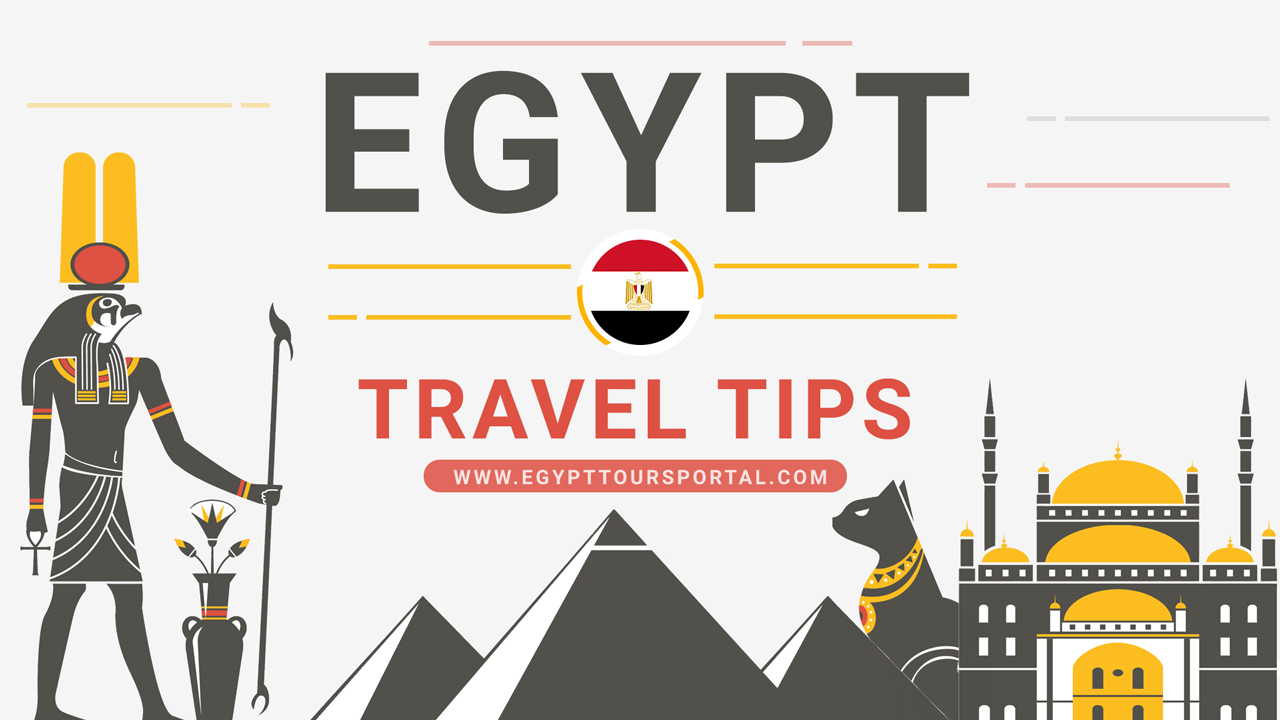
The Best Egypt Travel Tips 2025
Will you travel to Egypt? Here are the best Egypt travel tips for 2025 which will give you important hi...
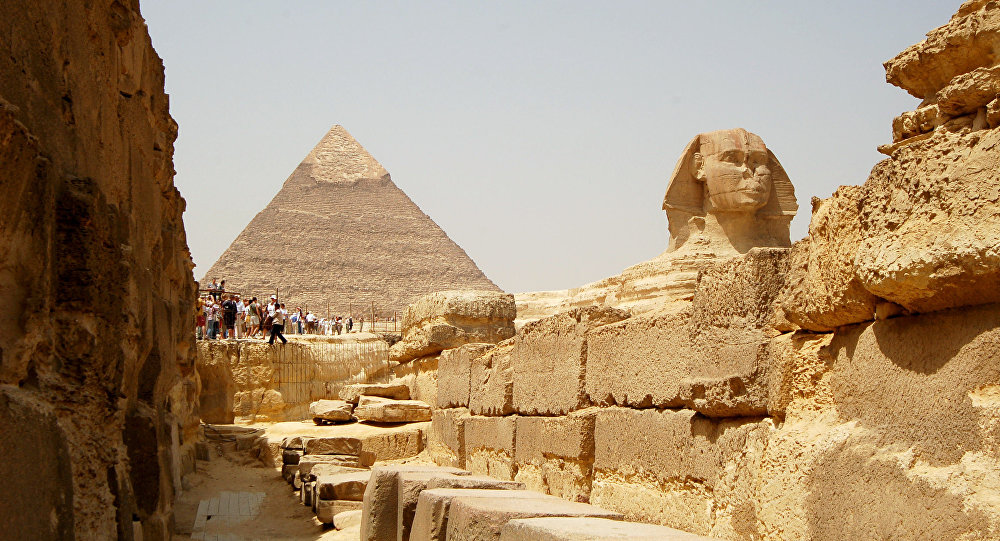
Best 15 Cities to Visit in Egypt Today 2025
Discover Egypt's top 15 cities, from ancient wonders to stunning beach resorts, in this article. Prepare ...
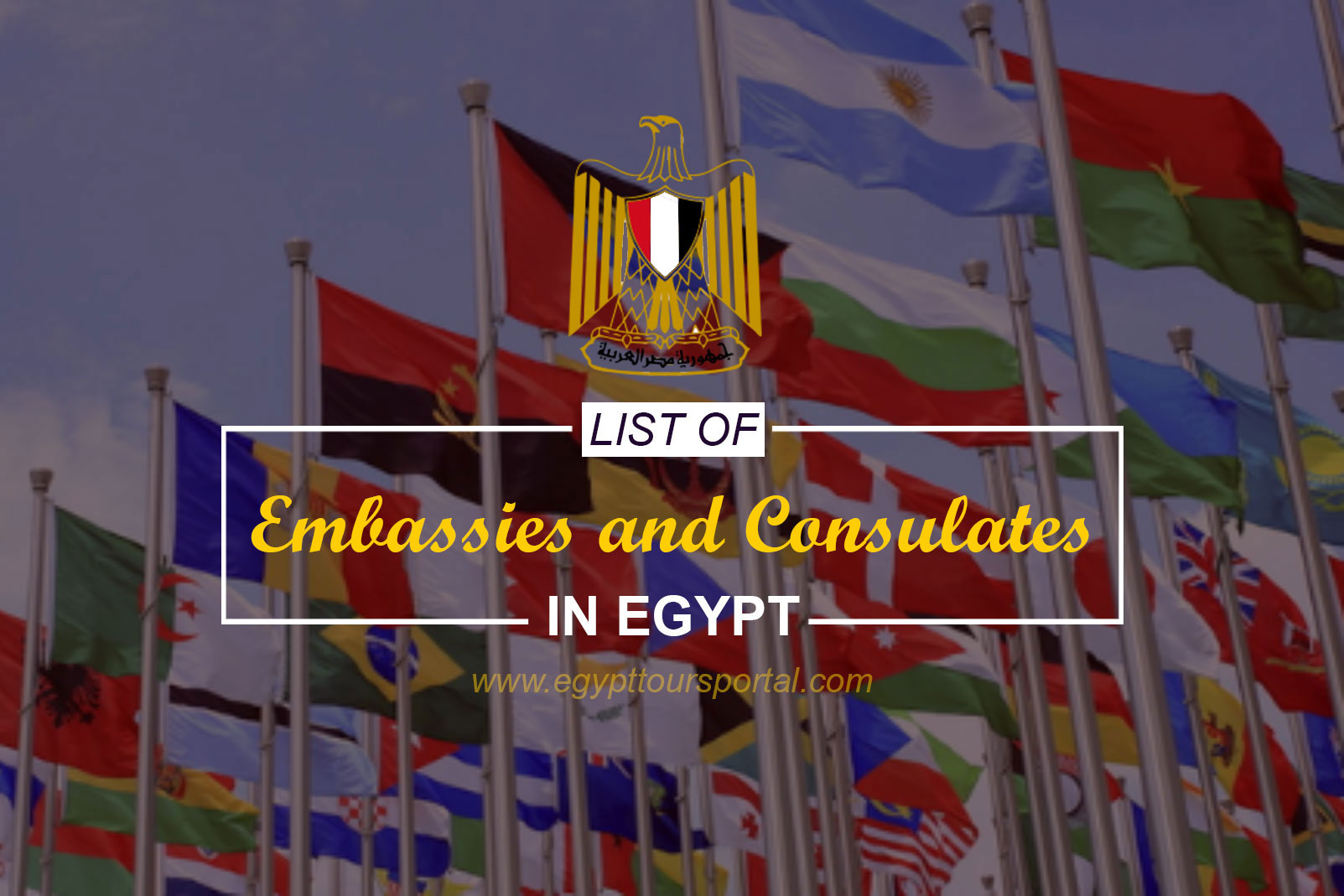
List of Foreign Embassies and Consulates in Egypt
Here is a list of embassies and consulates in Egypt with each info about the embassy such as its address,...









